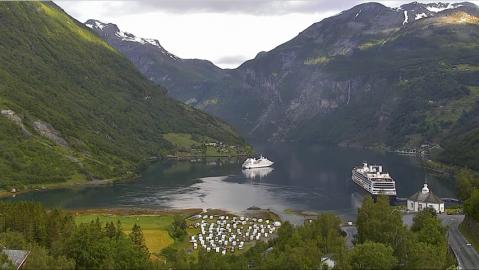Port is an historical, complex, and sometimes confusing wine, but it is more than worth your time to learn about. M.C. Ice go over everything from the vineyards of the Douro, to the history of this wine (with geopolitical implications), to how it's made, and the array of styles. There's something for everyone in the world of Port and after this show, you should be able to figure out which is for you!
Here is the written primer to go along with the show...
The Basics: What is Port?
Port is a Portuguese fortified wine, meaning you add distilled grape spirit, or brandy, to the wine at some point during production. A wine is technically only Port if grapes are from the Douro Valley in northeast Portugal and winemaking takes place there or in the area surround the city of Porto on the Atlantic Coast. There are tons of styles and flavors of this wine – there’s something for everyone.
Douro Valley: The Vineyards
The Douro Valley wine region follows the path of the Douro River as it comes out of Spain into Portugal. The region goes west through rugged, remote, steep and terraced granite mountains of northern Portugal, past the city of Porto into Atlantic Ocean. There are three official zones of the Douro Valley: the Baixo (lower) Corgo, the Cima (higher) Corgo and the Douro Superior
Baixo Corgo is the westernmost zone and is cool, rainy and the sub region with the most vineyards.Often these grapes are for cheap ruby and tawny Port Cima Corgo is upstream from the Baixo Corgo and is where the best vineyards for Port are located. Hotter and drier than Baixo, these excellent grapes are used for Vintage, Reserve, aged Tawny, and Late Bottled Vintage Ports Douro Superior is the easternmost zone, going right up to the Spanish border. It has a lot of land but is least developed. It is the hottest, driest area, and a bit flatter
Land and Climate
The Douro has hot, dry summers and steep rocky hillsides bordering the Douro River and its tributaries. The thin, poor schist and granite soils force the grapes to dig deep into schist to look for water and force humans to build terraces to do viticulture: 2/3 of vineyard are on slopes with 30%+ grade.
The Grapes
Reds: Producers are permitted to use more than 80 red varieties but 5 are widely used: Touriga Nacional, Touriga Franca, Tinta Barroca, Tinta Roriz (Tempranillo), Tinta Cão. The best wines are blended from low yielding vines with grapes that are small with thick skins and good acidity levels. The grapes here, with the exception of Tempranillo, are indigenous and suited to the hot, dry conditions of the Douro. There is nothing else that tastes like these blends Whites (30 allowed): Gouveio, Malvasia Fino, Moscatel, Vinosinho, Rabigato, Esgana-Cão (Sercial of Madeira, dog strangler), others
History of Port: Most of the information on Port was on Taylor Fladgate’s excellent site.
Winemaking: The Steps
Grow grapes in Douro. The IVDP (Instituto dos Vinhos do Douro e Porto– Port and Douro Wines Institute)uses the beneficio system (similar to the Échelle des Crus in Champagne) to classify vineyards with a grade that will determine the quantity of Port Wine that can be made from each parcel. Put the grapes in a vat (different varieties are usually co-fermented). Stomp them by foot or press them and then start fermentation. When you get to the sugar level you want in the finished wine, run the wine out of the lagar into a vat. To that runoff of juice, add aguardente to kill the yeast and stop fermentation, leaving some sweetness. The resulting wine is usually 19% to 20% alcohol Let the wine chill out in Douro until spring, evaluate it for what style of Port it will make and then take the wine to lodges at Vila Nova de Gaia near the city of Porto to be blended, aged, bottled and then sold. The real magic is in the ageing…
Ageing & Port Styles
Ports differ because of the quality of the vineyards/grapes, the makeup of the blend, and the ageing regimens they go through. Age softens the bitter, astringent tannins and with time older Ports become brownish in color, soft in tannin, and full of interesting aromas and flavors.
Port is classified by how long and WHAT it’s aged in: Wood or bottle
Wood Aged Port is matured in wooden barrels. They’re permeable to air so this is called oxidative aging. These wines lose color faster than bottle aged Ports. Bottle Aged Port is aged in barrel for 2 or fewer years. It then goes into a bottle and the buyer ages it in their own cellar. Vintage Port, the finest of all Ports, is made this way.
Styles of Port Fruity, dark colored Ports: Ruby, LBV
Ruby Port is, not surprisingly, ruby red in color. Looking to maintain color and its full cherry and black fruit notes, this wine goes through very little oxidation before release. It can age up to 3 years in wood or another vessel that allows small amounts of air...
Here is the written primer to go along with the show...
The Basics: What is Port?
Port is a Portuguese fortified wine, meaning you add distilled grape spirit, or brandy, to the wine at some point during production. A wine is technically only Port if grapes are from the Douro Valley in northeast Portugal and winemaking takes place there or in the area surround the city of Porto on the Atlantic Coast. There are tons of styles and flavors of this wine – there’s something for everyone.
Douro Valley: The Vineyards
The Douro Valley wine region follows the path of the Douro River as it comes out of Spain into Portugal. The region goes west through rugged, remote, steep and terraced granite mountains of northern Portugal, past the city of Porto into Atlantic Ocean. There are three official zones of the Douro Valley: the Baixo (lower) Corgo, the Cima (higher) Corgo and the Douro Superior
Baixo Corgo is the westernmost zone and is cool, rainy and the sub region with the most vineyards.Often these grapes are for cheap ruby and tawny Port Cima Corgo is upstream from the Baixo Corgo and is where the best vineyards for Port are located. Hotter and drier than Baixo, these excellent grapes are used for Vintage, Reserve, aged Tawny, and Late Bottled Vintage Ports Douro Superior is the easternmost zone, going right up to the Spanish border. It has a lot of land but is least developed. It is the hottest, driest area, and a bit flatter
Land and Climate
The Douro has hot, dry summers and steep rocky hillsides bordering the Douro River and its tributaries. The thin, poor schist and granite soils force the grapes to dig deep into schist to look for water and force humans to build terraces to do viticulture: 2/3 of vineyard are on slopes with 30%+ grade.
The Grapes
Reds: Producers are permitted to use more than 80 red varieties but 5 are widely used: Touriga Nacional, Touriga Franca, Tinta Barroca, Tinta Roriz (Tempranillo), Tinta Cão. The best wines are blended from low yielding vines with grapes that are small with thick skins and good acidity levels. The grapes here, with the exception of Tempranillo, are indigenous and suited to the hot, dry conditions of the Douro. There is nothing else that tastes like these blends Whites (30 allowed): Gouveio, Malvasia Fino, Moscatel, Vinosinho, Rabigato, Esgana-Cão (Sercial of Madeira, dog strangler), others
History of Port: Most of the information on Port was on Taylor Fladgate’s excellent site.
Winemaking: The Steps
Grow grapes in Douro. The IVDP (Instituto dos Vinhos do Douro e Porto– Port and Douro Wines Institute)uses the beneficio system (similar to the Échelle des Crus in Champagne) to classify vineyards with a grade that will determine the quantity of Port Wine that can be made from each parcel. Put the grapes in a vat (different varieties are usually co-fermented). Stomp them by foot or press them and then start fermentation. When you get to the sugar level you want in the finished wine, run the wine out of the lagar into a vat. To that runoff of juice, add aguardente to kill the yeast and stop fermentation, leaving some sweetness. The resulting wine is usually 19% to 20% alcohol Let the wine chill out in Douro until spring, evaluate it for what style of Port it will make and then take the wine to lodges at Vila Nova de Gaia near the city of Porto to be blended, aged, bottled and then sold. The real magic is in the ageing…
Ageing & Port Styles
Ports differ because of the quality of the vineyards/grapes, the makeup of the blend, and the ageing regimens they go through. Age softens the bitter, astringent tannins and with time older Ports become brownish in color, soft in tannin, and full of interesting aromas and flavors.
Port is classified by how long and WHAT it’s aged in: Wood or bottle
Wood Aged Port is matured in wooden barrels. They’re permeable to air so this is called oxidative aging. These wines lose color faster than bottle aged Ports. Bottle Aged Port is aged in barrel for 2 or fewer years. It then goes into a bottle and the buyer ages it in their own cellar. Vintage Port, the finest of all Ports, is made this way.
Styles of Port Fruity, dark colored Ports: Ruby, LBV
Ruby Port is, not surprisingly, ruby red in color. Looking to maintain color and its full cherry and black fruit notes, this wine goes through very little oxidation before release. It can age up to 3 years in wood or another vessel that allows small amounts of air...
- Category
- ATLANTIC ROAD
Commenting disabled.














